Abstract
The organ distribution, blood clearance rate, and immune response to intravenous 51Cr-labelled sheep red blood cells (SRBC) have been studied in mice, following administration of a single intravenous dose of colloidal carbon. In normal mice 80–90 per cent of SRBC were found in the liver and 2–6 per cent in the spleen. The blood clearance rate of SRBC was extremely rapid. Colloidal carbon caused a marked depression of hepatic uptake of SRBC and a corresponding increase in splenic uptake. This effect was maximal at 6 hours after carbon administration and recovery of hepatic phagocytosis occurred over 4 days. The rate of clearance of SRBC was greatly reduced while the hepatic uptake of red cells was depressed. At low doses of cells there was an increase in titre of humoral antibody and in numbers of spleen PFCs while, at high doses of cells, a slight depression in immune response occurred.
`Stimulation' of splenic uptake of antigen and of the immune response by colloidal carbon is associated with depression of hepatic phagocytosis.
Full text
PDF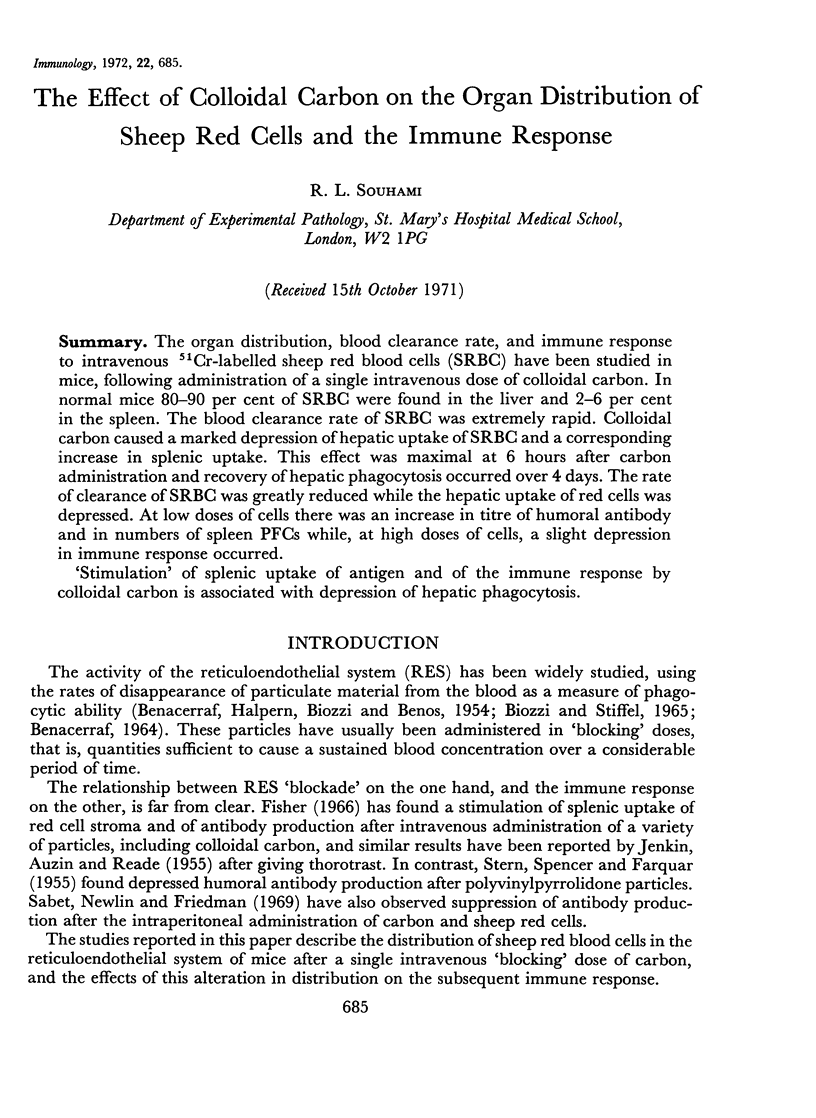
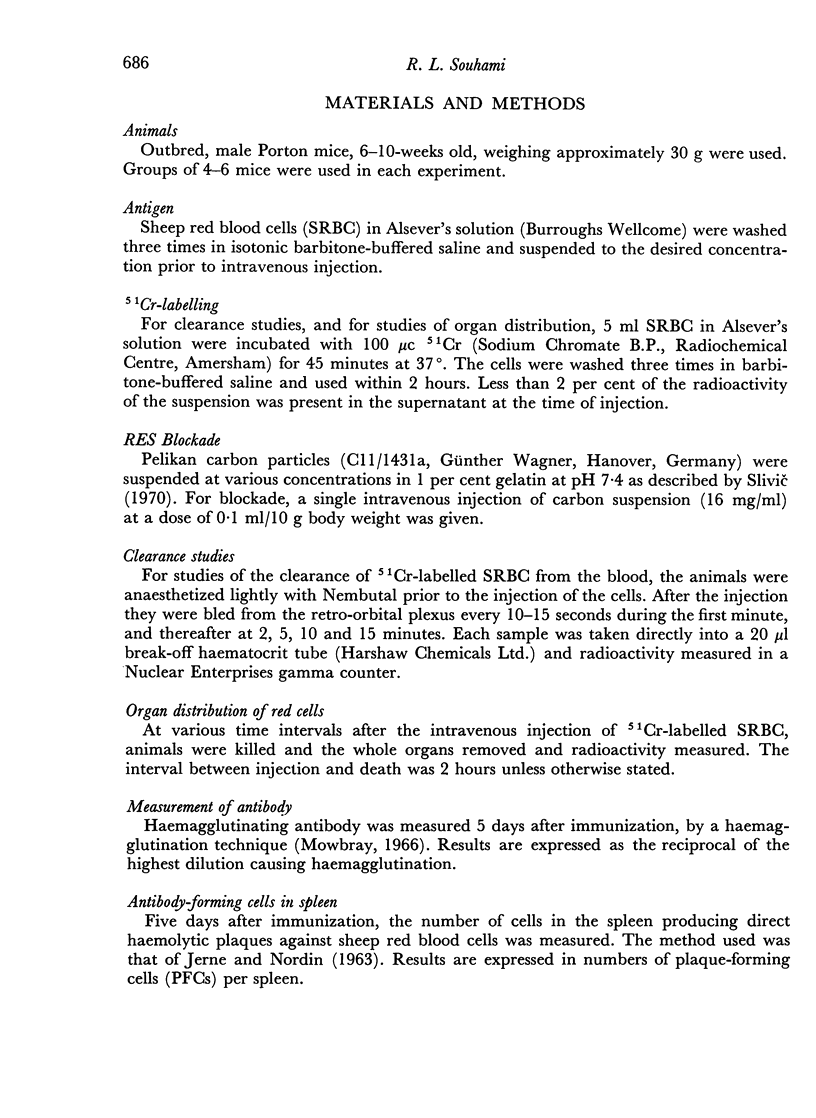
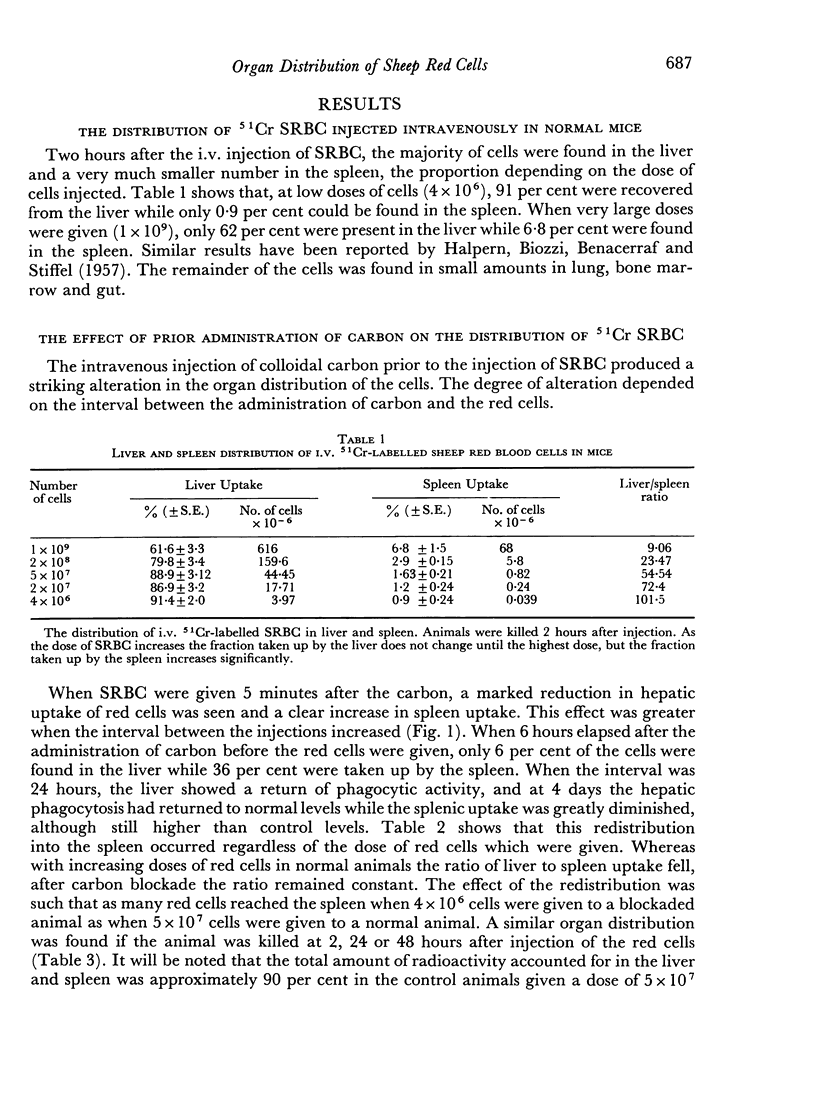
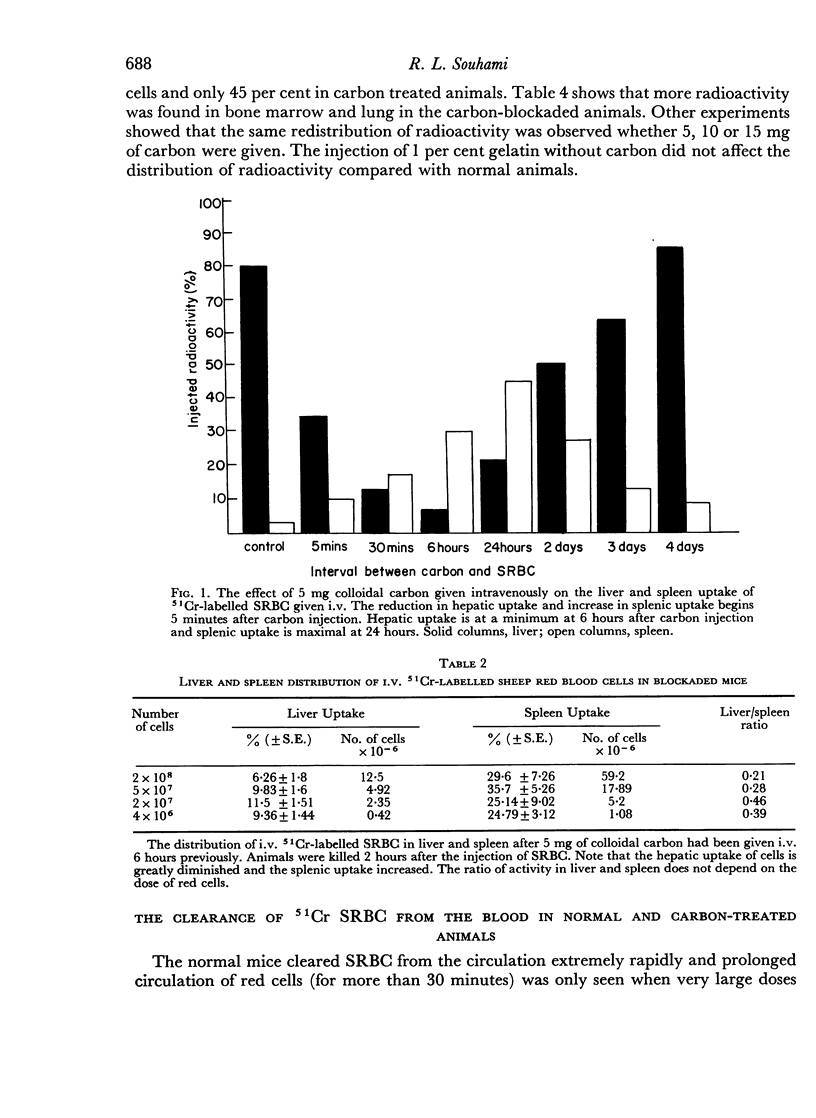
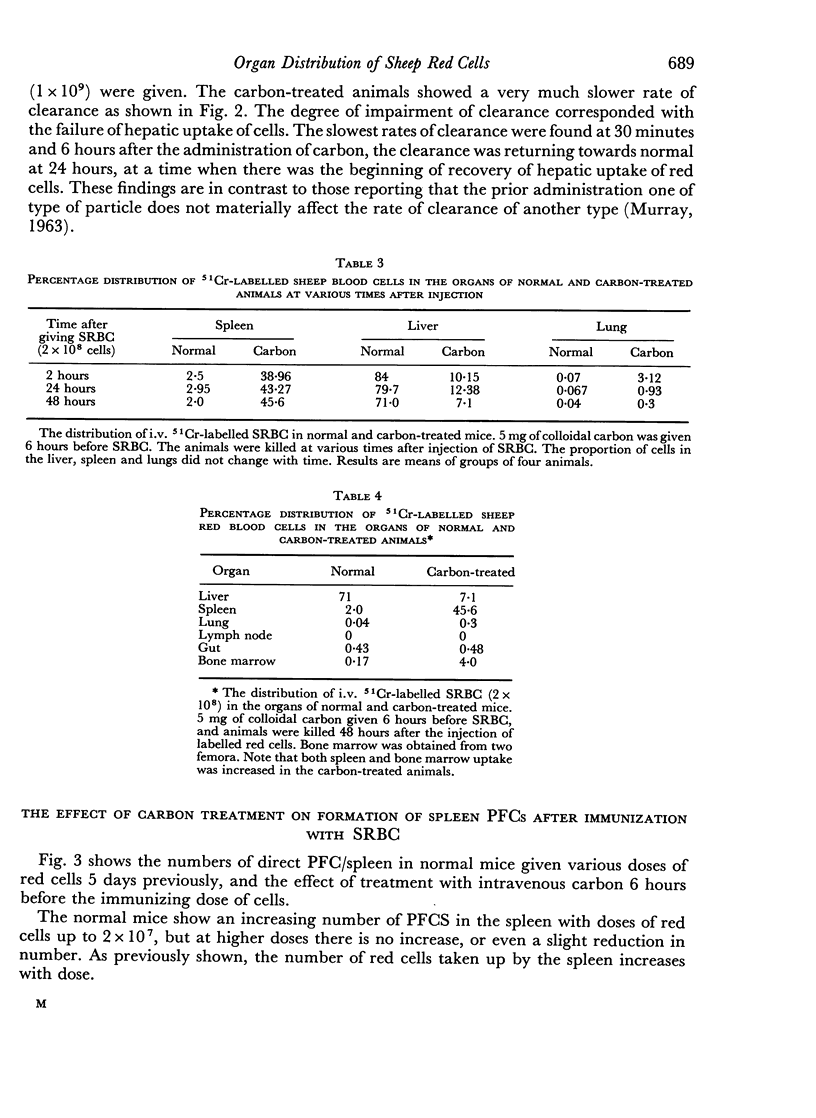
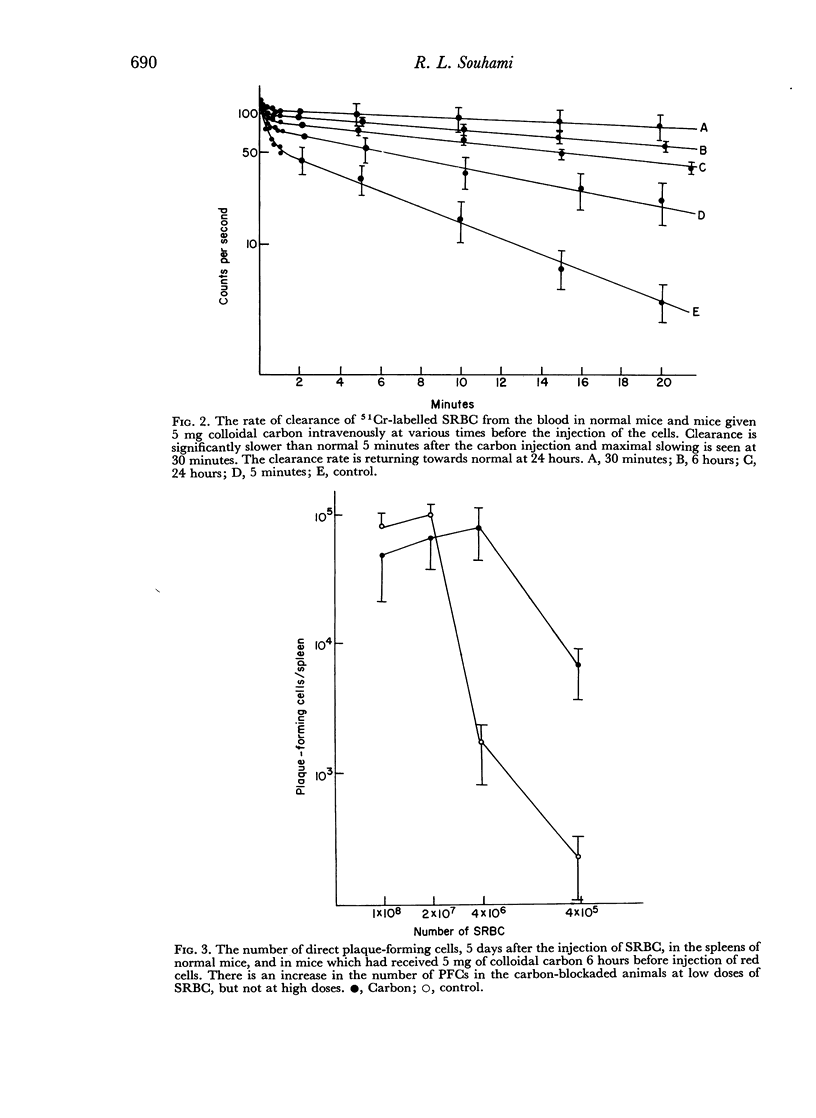
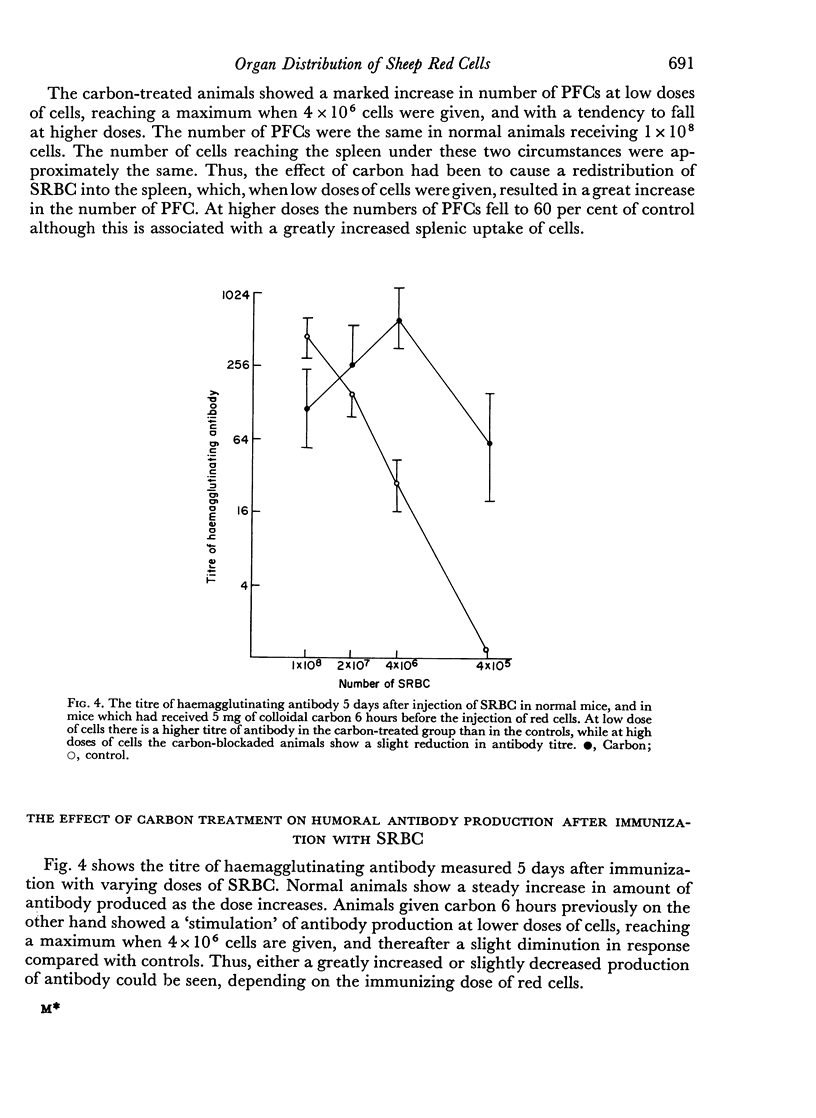
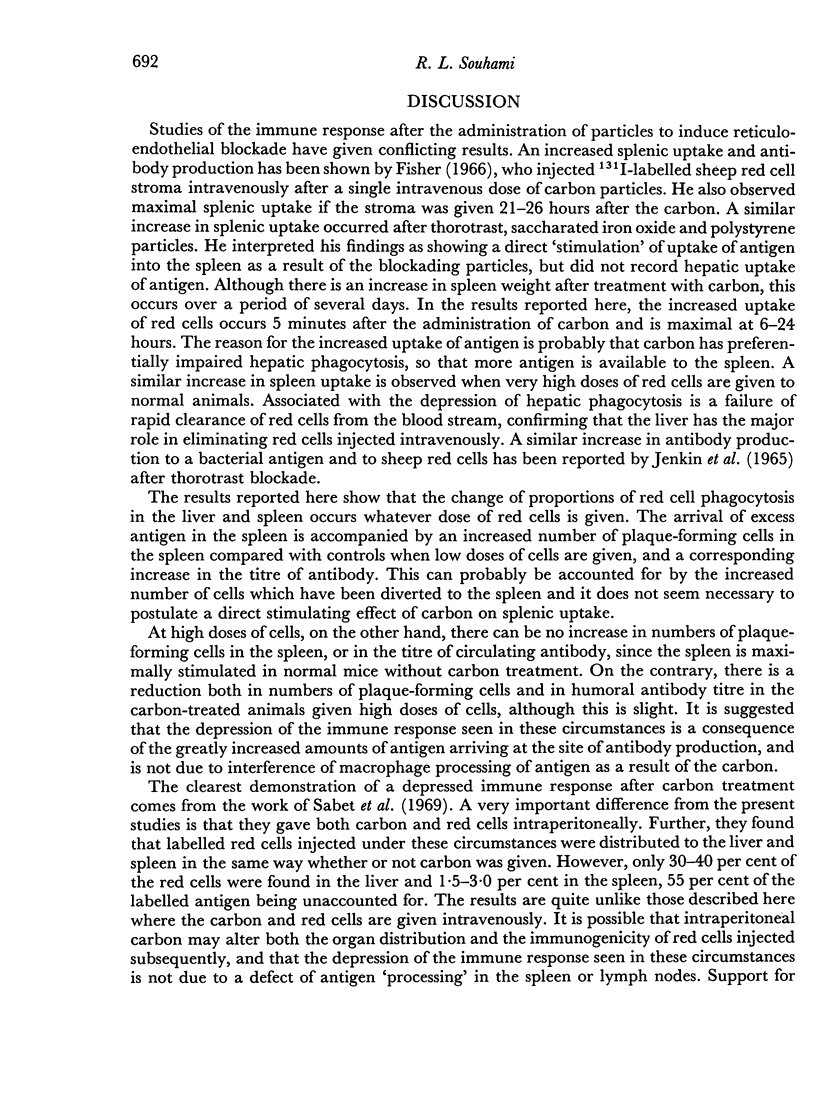
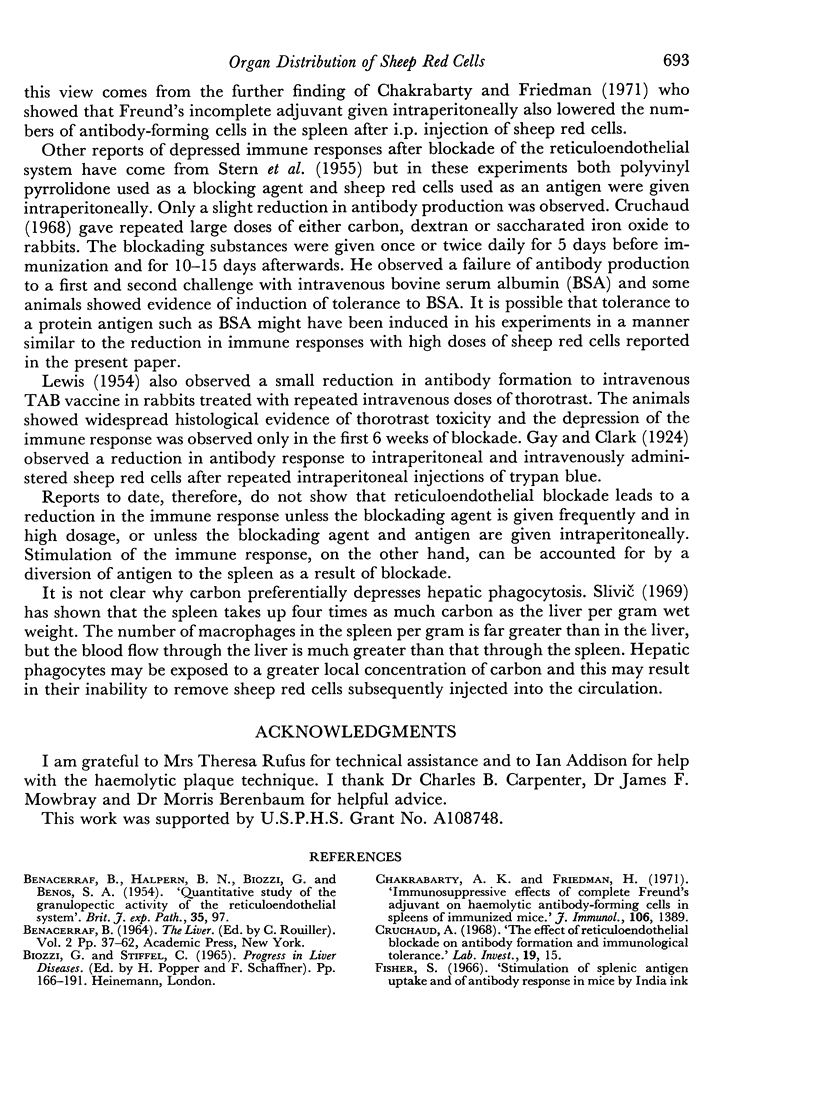

Selected References
These references are in PubMed. This may not be the complete list of references from this article.
- BENACERRAF B., HALPERN B. N., BIOZZI G., BENOS S. A. Quantitative study of the granulopectic activity of the reticulo-endothelial system. III. The effect of cortisone and nitrogen mustard on the regenerative capacity of the R.E.S. after saturation with carbon. Br J Exp Pathol. 1954 Apr;35(2):97–106. [PMC free article] [PubMed] [Google Scholar]
- Chakrabarty A. K., Friedman H. Immunosuppressive effects of incomplete Freund's adjuvant on hemolytic antibody-forming cells in spleens of immunized mice. J Immunol. 1971 May;106(5):1389–1395. [PubMed] [Google Scholar]
- Cruchaud A. The effect of reticuloendothelial blockade on antibody formation and immunologic tolerance. Lab Invest. 1968 Jul;19(1):15–24. [PubMed] [Google Scholar]
- Fisher S. Stimulation of splenic antigen uptake and of antibody response in mice by India ink or other "blockading" agents. Immunology. 1966 Aug;11(2):127–136. [PMC free article] [PubMed] [Google Scholar]
- HALPERN B. N., BIOZZI G., BENACERRAF B., STIFFEL C. Phagocytosis of foreign red blood cells by the reticulo-endothelial system. Am J Physiol. 1957 Jun;189(3):520–526. doi: 10.1152/ajplegacy.1957.189.3.520. [DOI] [PubMed] [Google Scholar]
- JERNE N. K., NORDIN A. A. Plaque formation in agar by single antibody-producing cells. Science. 1963 Apr 26;140(3565):405–405. [PubMed] [Google Scholar]
- Jenkin C. R., Auzins I., Reade P. C. The synthesis of macroglobulin antibody to a bacterial antigen in mice after treatment with thorotrast. Aust J Exp Biol Med Sci. 1965 Oct;43(5):607–624. doi: 10.1038/icb.1965.46. [DOI] [PubMed] [Google Scholar]
- LEWIS L. A. Effect of repeated injections of thorotrast on antibody production. Am J Physiol. 1954 Nov;179(2):285–286. doi: 10.1152/ajplegacy.1954.179.2.285. [DOI] [PubMed] [Google Scholar]
- Mowbray J. F., Hargrave D. C. Further studies on the preparation of the immunosuppressive alpha-2 protein fraction from the serum and its assay in mice. Immunology. 1966 Nov;11(5):413–419. [PMC free article] [PubMed] [Google Scholar]
- STERN K., SPENCER K., FARQUHAR M. Effect of polyvinyl pyrrolidone on immune response in mice. Proc Soc Exp Biol Med. 1955 May;89(1):126–131. doi: 10.3181/00379727-89-21735. [DOI] [PubMed] [Google Scholar]
- Sabet T., Newlin C., Friedman H. Effects of RES "blockade" on antibody-formation. I. Suppressed cellular and humoral haemolysin responses in mice injected with carbon particles. Immunology. 1969 Apr;16(4):433–446. [PMC free article] [PubMed] [Google Scholar]


